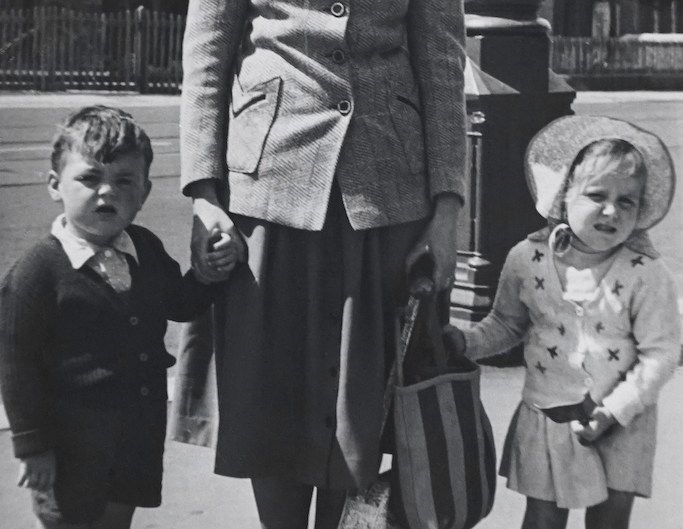We love having children. And we are grateful to have children, but…when our children argue, having them can feel beyond exhausting.
It can feel like running a marathon with one shoe on. Or getting pounded by wave after wave right at the shore of our favorite tropical beach. Or trying to wade through a muddy river in the rainforest.
E-X-H-A-U-S-T-I-N-G.
Only, at least in those three hypothetical scenarios, presumably, there isn’t screaming, hitting, or crying children following you from room to room as you try to survive the moment.
In the times when our children can’t seem to keep their hands to themselves, each of them needs our attention, and everything (yes, I do mean everything) turns into an argument, many of us want to yell, scream, run away, or find a small deserted cave to inhabit.
This is how sibling fighting can make even the sanest of us feel. First, we work so hard to help each of our children with their own needs, and then, kaboom! our kids start fighting and we have a whole new set of blueprints to navigate (a set that many of us never got directions on how to read!).
This is where I step in. I am a parenting educator, former elementary school teacher, and other titles that I could insert, but my most important title is that I am a mama of two.
I know how crazy-making sibling fighting can be and it is my passion to offer tools to both parents and children so that we can all have the calm we deserve and crave within our home.
Below are my tools for navigating the sibling fights many of us experience:
Three Tools for You.
Tool #1: Don’t Take Sides.
We can get in the habit of blaming one of our kids for being the instigator or being the one who we think causes the most trouble. The truth is, it takes two to argue and we never know the whole story behind each fight. Instead of blaming one of our children, we can take a more neutral perspective and help validate our children’s feelings. This will help our children feel heard and we can then support them in finding a solution for the argument at hand.
Tool #2: Carve Out Special Time.
It is common for siblings to fight and I think it is important to normalize that fact. However, we want our children’s long-term interactions to be more positive than negative. As parents, we might be used to planning special time with each one of our children individually, but did you know you can also have your children carve out special time for each other? You can help facilitate this time that they have together by setting up a game, getting out a special craft project, and even joining in the fun to ensure things go a bit more smoothly. This time will contribute to their overall bond and help support their relationship.
Tool #3: Be Present.
If you hear things starting to escalate between siblings, simply become present in the space. Sometimes, just being there is enough of a reminder for children to tone it down. If that doesn’t work, and things are still getting too heated, call a mini family gathering to unpack the problem and help your children come up with possible solutions. We don’t have to wait until our children are screaming to come into the room and help deescalate an argument.
Three Tools for Your Child.
Tool #1: Read to Normalize.
Books are an amazing resource to normalize a behavior and find solutions to a reoccurring problem. A great picture book to read to your children about sibling fighting is “When Miles Got Mad” by Abbie Schiller and Samantha Counter. Read this story when your children are not upset and use it as an opportunity to talk about things they can try the next time they feel frustrated with one another.
Tool #2: Understand the Brain.
When children (and adults) are angry, we are in the lower part of our brain. When in this space, it can be really tricky to reason things out or navigate an argument. Calming techniques (which I will share in Tool #3) can help our children move from the lower part of the brain into the upper part of their brain where the prefrontal cortex is.
The prefrontal cortex is in charge of executive functions, decision-making, and critical thinking (just to name a few).
Understanding what is going on in the brain can give us grown-ups a more objective view as we help our children get back into their prefrontal cortex.
Tool #3: Have a Plan.
In my experience, and in the experience of the children I work with, it is not enough to simply say, “From now on, I just won’t fight with my brother or sister.”
To create a new habit, we must set ourselves up for success and that starts with creating a plan. In the same way you help your child create a homework plan to get everything done in time, this plan will help your children learn new tools for the next time a sibling argument occurs.
Sit down with your children and come up with a plan of what they can do when they feel angry with each other. You can write it on the “Plan to Pause Poster” I created to help families go from the lower brain to the upper brain when upset.
My children’s posters include: go on a walk, smell a flower or a piece of fruit, put a stuffy on their belly and watch it go up and down, and listen to an audio book.
As your children create their own posters, you may be amazed by how much more they are willing to try the tools they thought of themselves! Just remember, though, this is a learning process and when children are really angry (aka in the lower part of their brain), they may need a moment to cool down before they can use their new tools to find a solution. Be patient with them and with yourself.
You got this!!!


 Share on bsky
Share on bsky





Read 8 comments and reply